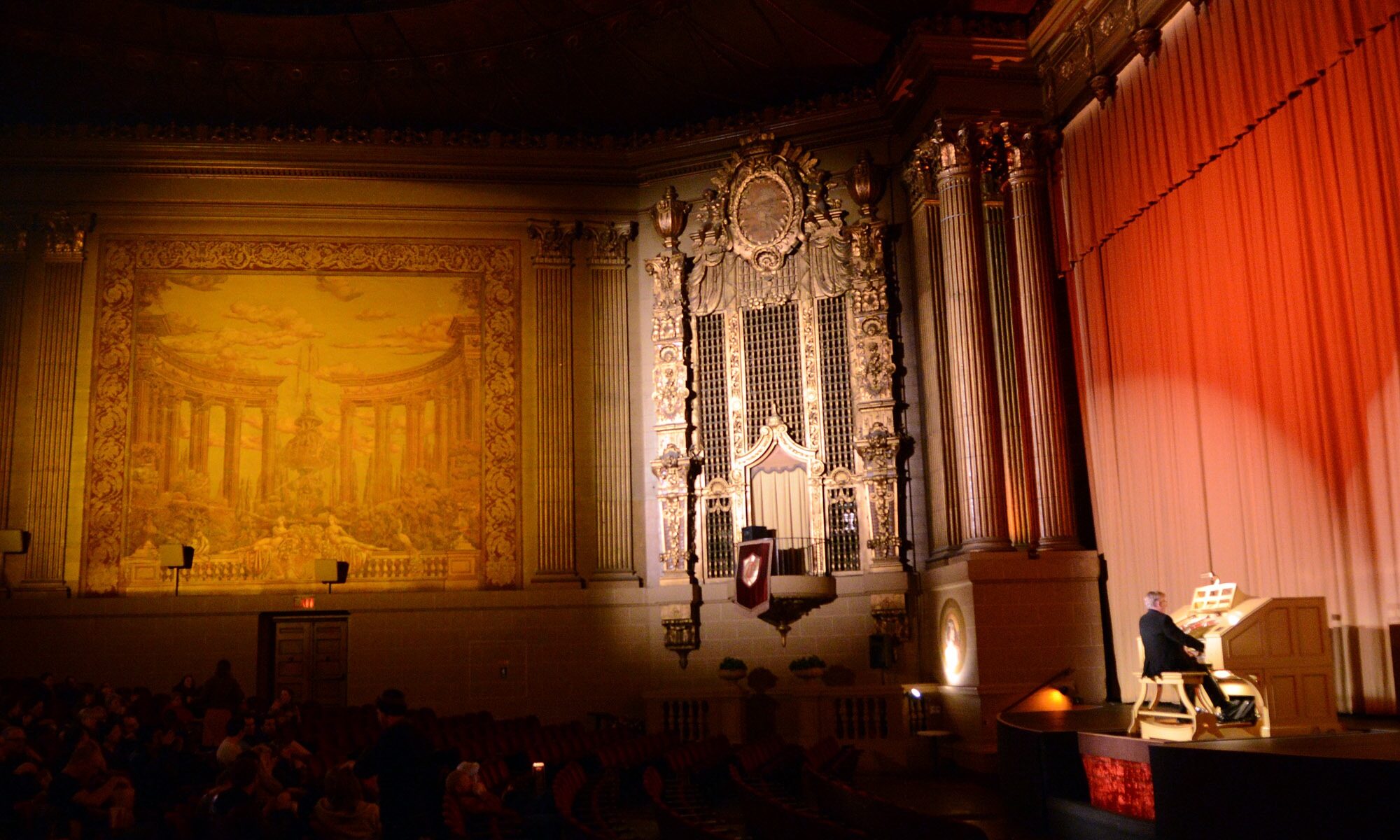A behind the screens look at the Castro’s David Hegarty
By Andrew Gilbert

Behind the keys of the Castro’s mighty Wurlitzer, David Hegarty’s passionate styles round out the ultimate movie-going experience.
IN A CITY OF FILM FANATICS, the Castro Theatre is the mother church, a venerated space where disciples come to bask in the presence of their cinematic idols. And for more than a quarter century, David Hegarty has provided the music that puts movie mavens in the mood. Since 1976 he’s been one of the musicians responsible for playing the theater’s mighty Wurlitzer organ, performing quarter-hour medleys before the main feature. When the lights go down he descends with the organ beneath the stage, then reappears at intermission to plays another 15-20 minute set.
A devoted cinephile himself, Hegarty always tries to come up with a program that references the film on the screen. With contemporary movies, he pretty much has free reign to play standards by American Songbook composers like Cole Porter, George Gershwin and Jerome Kern. But when there’s a musical or a classic film with a memorable score on the bill, he does whatever it takes to come up with an appropriate set. “If it’s a musical there’s an automatic repertoire to pick from,” Hegarty said. “I’ll do an overture using music from the show. If it’s a movie with a really good theme, particularly from the Golden Age of the 1930s and 40s, I’ll rent the video if I can find it, and listen to the music and try to play some of the actual score. I usually do the intermission off the top of my head. But it depends on how well the movie lends itself to themes and musical ideas.”
For movie goers, Hegarty is the icing on the Castro cake. A San Francisco landmark that serves as the cultural heart of one of the country’s most fabulous neighborhoods, the cavernous movie palace was built in 1922 and can seat 1,450 people. Much of the theater’s vintage decor has been preserved, though the original Wurlitzer organ was removed some time in the 50s. When Hegarty arrived in the city from Ohio in 1976, the management had recently installed an electronic organ, and within weeks he was recruited as a substitute player.
By the early 80s, Hegarty was working regularly at the Castro, and a local family of organ enthusiasts had installed an classic Wurlitzer and reconditioned all the pipes. When Elbert Lachelle retired in the early 90s—the octogenarian had played on the original Castro organ back in the day—Hegarty took over as the main organ man, playing five to seven days a week. He revels in having nightly access to the powerful instrument.
“It’s the sensation of being the conductor of a giant orchestra,” Hegarty said. “You have the full gamut of orchestral colors at your finger tips, the full dynamic range from a whisper to a roar. It is a thrilling experience, and I feel very lucky to be able to perform on an instrument like that to enthusiastic audiences.”
“It’s the sensation of being the conductor of a giant orchestra…you have the full dynamic range from a whisper to a roar.”
WHERE SAN FRANCISCO / APRIL 2002
